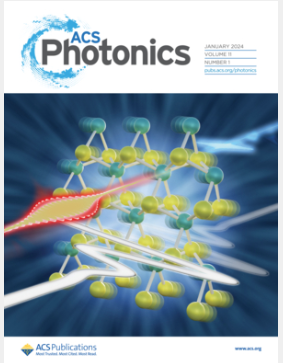All-Optical Content-Addressable Memory (CAM) Based on All-Fiber Platform
IF 6.5
1区 物理与天体物理
Q1 MATERIALS SCIENCE, MULTIDISCIPLINARY
引用次数: 0
Abstract
The advent of optical CAM (O-CAM) is promising in addressing challenges related to data traffic growth and ultrafast signal processing in modern optical communication systems. O-CAM, based on semiconductor optical amplifiers (SOA) and silicon microring resonators, can achieve fast CAM. However, these devices have limitations, such as high cost, complex systems, and the need for high precision manufacturing technology. Herein, we propose an all-optical CAM based on fiber and Ge2Sb2Te5 (GST). The device structure is simple and easy to manufacture, and it does not require additional photoelectric conversion or coupling between the fiber and waveguide. We first use the core of side-etched seven-core fibers (SCF) to achieve 22-level storage. Next, CAM is realized by a Mach–Zehnder (MZ) interferometer composed of two fiber cores of SCF. Finally, we achieve a 3-bit CAM by using a single SCF, and we can determine the degree of matching. The maximum average energy density for an individual CAM cell is 5.72 nJ/μm2 and it requires no continuous power input to maintain the switching states, which is naturally advantageous given the low power density and the long intervals between entry updates in modern optical packet switching systems.

基于全光纤平台的全光内容可寻址存储器
光学CAM (O-CAM)的出现有望解决现代光通信系统中与数据流量增长和超快信号处理相关的挑战。基于半导体光放大器(SOA)和硅微环谐振器的O-CAM可以实现快速CAM。然而,这些设备有局限性,如成本高,系统复杂,需要高精度的制造技术。在此,我们提出了一种基于光纤和Ge2Sb2Te5 (GST)的全光CAM。该器件结构简单,易于制造,不需要额外的光电转换或光纤与波导之间的耦合。我们首先使用侧蚀刻七芯光纤(SCF)的芯来实现22级存储。其次,采用由两个光纤芯组成的Mach-Zehnder干涉仪实现CAM。最后,我们使用单个SCF实现了一个3位CAM,并可以确定匹配程度。单个CAM单元的最大平均能量密度为5.72 nJ/μm2,并且不需要连续的功率输入来维持交换状态,这在现代光分组交换系统中具有低功率密度和入口更新间隔长的优势。
本文章由计算机程序翻译,如有差异,请以英文原文为准。
求助全文
约1分钟内获得全文
求助全文
来源期刊

ACS Photonics
NANOSCIENCE & NANOTECHNOLOGY-MATERIALS SCIENCE, MULTIDISCIPLINARY
CiteScore
11.90
自引率
5.70%
发文量
438
审稿时长
2.3 months
期刊介绍:
Published as soon as accepted and summarized in monthly issues, ACS Photonics will publish Research Articles, Letters, Perspectives, and Reviews, to encompass the full scope of published research in this field.
 求助内容:
求助内容: 应助结果提醒方式:
应助结果提醒方式:


